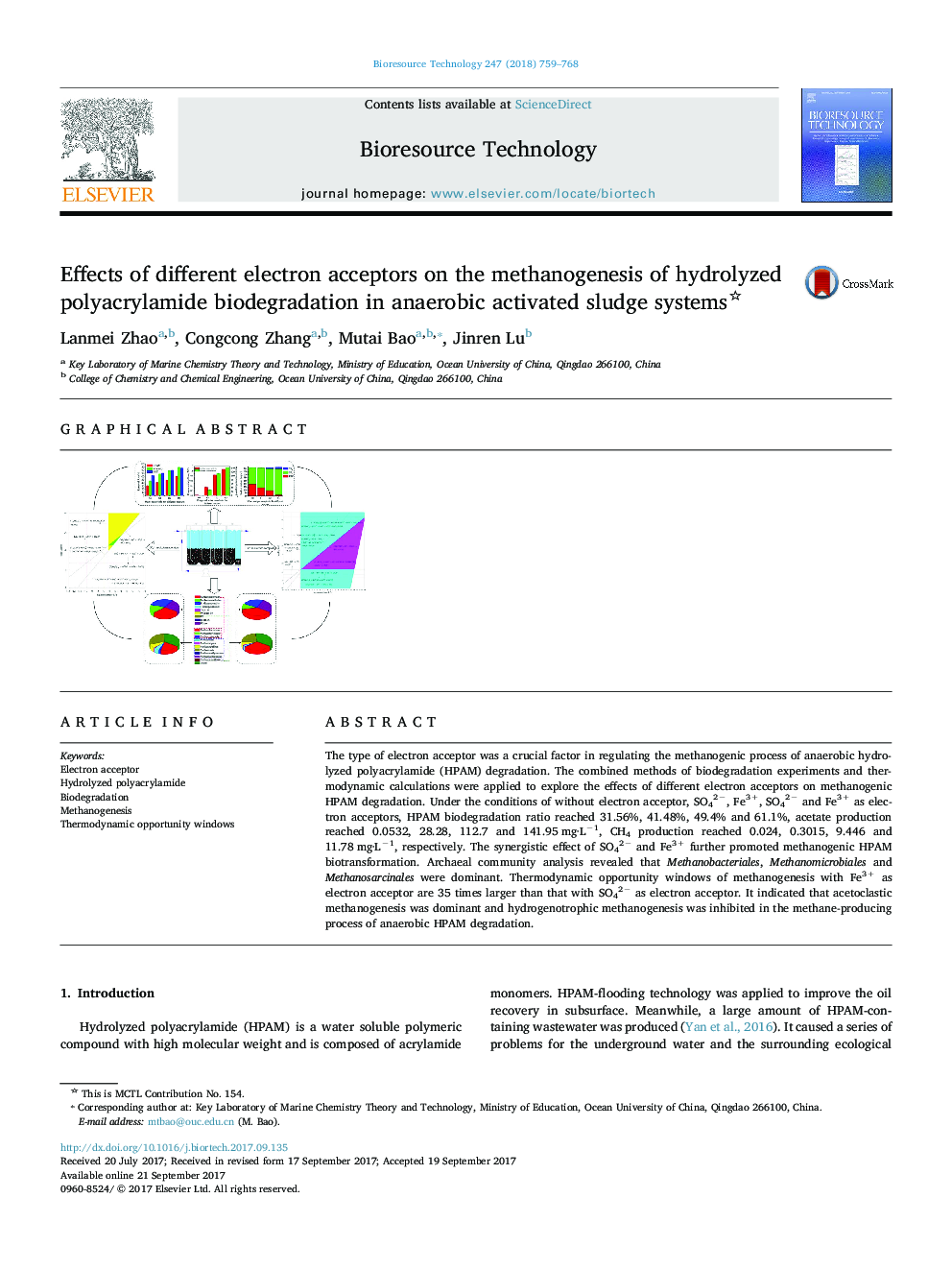| Article ID | Journal | Published Year | Pages | File Type |
|---|---|---|---|---|
| 4996703 | Bioresource Technology | 2018 | 10 Pages |
â¢HPAM biodegradation was evaluated with SO42â and Fe3+ as electron acceptors.â¢CH4 production was improved with SO42â and Fe3+ as the mixed electron acceptors.â¢Methanobacteriales, Methanomicrobiales and Methanosarcinales were dominant.â¢The thermodynamic opportunity windows of methane-producing were drawn.â¢Acetoclastic methanogenesis was dominant and hydrogenotrophic type was inhibited.
The type of electron acceptor was a crucial factor in regulating the methanogenic process of anaerobic hydrolyzed polyacrylamide (HPAM) degradation. The combined methods of biodegradation experiments and thermodynamic calculations were applied to explore the effects of different electron acceptors on methanogenic HPAM degradation. Under the conditions of without electron acceptor, SO42â, Fe3+, SO42â and Fe3+ as electron acceptors, HPAM biodegradation ratio reached 31.56%, 41.48%, 49.4% and 61.1%, acetate production reached 0.0532, 28.28, 112.7 and 141.95 mg·Lâ1, CH4 production reached 0.024, 0.3015, 9.446 and 11.78 mg·Lâ1, respectively. The synergistic effect of SO42â and Fe3+ further promoted methanogenic HPAM biotransformation. Archaeal community analysis revealed that Methanobacteriales, Methanomicrobiales and Methanosarcinales were dominant. Thermodynamic opportunity windows of methanogenesis with Fe3+ as electron acceptor are 35 times larger than that with SO42â as electron acceptor. It indicated that acetoclastic methanogenesis was dominant and hydrogenotrophic methanogenesis was inhibited in the methane-producing process of anaerobic HPAM degradation.
Graphical abstractDownload high-res image (189KB)Download full-size image
